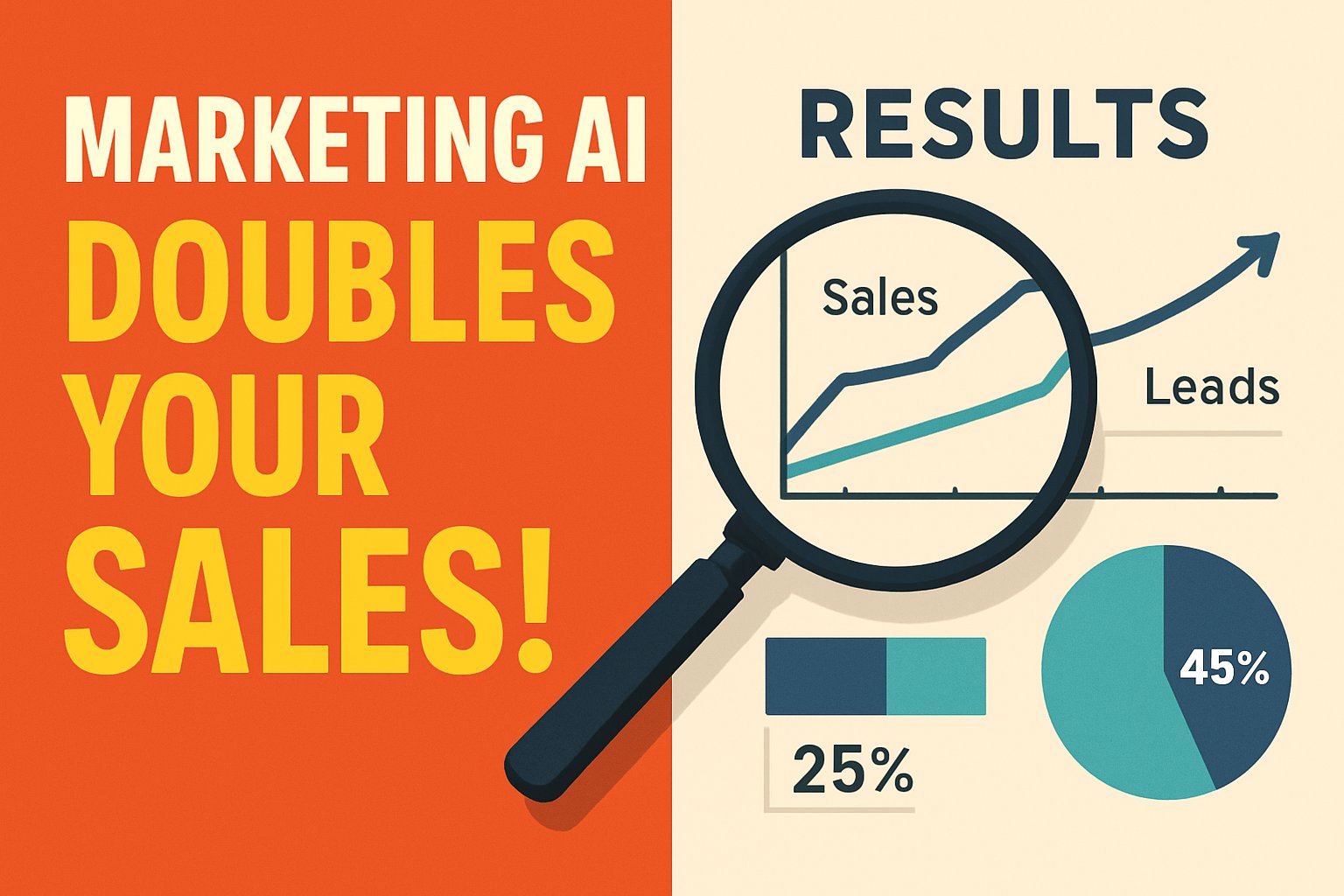
AI CERTS
1 hour ago
Marketing AI Claims Meet Measured Reality
This article unpacks what the 62% claim really means, when AI delivers, and how to build accountable programs. Along the way, we will examine Personalization maturity, emerging E-commerce risks, and certification pathways for ambitious teams.
Survey Sentiment Versus Reality
Coveo’s 2025 Commerce Relevance survey grabbed attention. It reported 62% of U.S. and U.K. shoppers felt “more likely” to buy when GenAI aided discovery. Moreover, Nissan Italy’s Amazon DSP campaign also cited a 62% higher click-through rate. Nevertheless, both figures reflect sentiment or isolated metrics, not cross-industry conversion averages. In contrast, Deloitte’s study for Meta found a smaller, yet tangible, 16-point lift tied to advanced Personalization maturity.

These differences stem from methodology. Self-reported intent inflates expectations, while campaign benchmarks cherry-pick best performers. Therefore, analysts urge caution when extrapolating vendor headlines to broad E-commerce markets.
These nuances reveal why sentiment cannot replace experimentation. However, they also suggest genuine potential when AI aligns with shopper needs. Consequently, leaders must separate hype from evidence before scaling spend.
Conversion Metrics Explained Clearly
Marketing AI programs often juggle multiple metrics. Click-through rate, add-to-cart ratio, and final conversion each paint partial pictures. Furthermore, attribution windows distort results when channels overlap. Rigorous teams prefer randomized A/B tests that isolate incremental impact. Deloitte’s research used advertiser panels across Meta placements to correlate maturity with lift. Meanwhile, Coveo relied on survey panels asking hypothetical questions.
- 62% – self-reported purchase intent (Coveo survey)
- 62% – click-through rate boost (Nissan Italy DSP)
- 16 percentage points – measured conversion gap (Deloitte/Meta study)
- 34% – consumers willing to let AI purchase autonomously (Omnisend poll)
Consequently, leaders should request experiment design, sample size, and baseline rates before accepting any percentage headline.
Accurate metrics protect investment and customer trust. Moreover, transparent reporting builds internal confidence for larger pilots.
Solid definitions guard budget decisions. Subsequently, the discussion shifts toward maturity models that predict sustainable uplift.
Personalization Maturity Drives Uplift
Deloitte segments advertisers into Low, Medium, High, and Champion tiers. Higher tiers integrate unified IDs, real-time decision engines, and strong governance. Additionally, they deploy creative variations at scale using Marketing AI. According to the study, Champion brands enjoyed conversion rates 16 points above basic peers. Meanwhile, lagging firms saw marginal gains despite similar tooling.
The lesson is simple. Technology alone does not guarantee success. Organisational readiness, data quality, and privacy compliance amplify AI potential. Therefore, advancing along the maturity curve should precede lofty revenue projections.
Maturity frameworks provide clear roadmaps. Consequently, upcoming sections examine external forces shaping those journeys.
Market Growth And Challenges
Market Research Future estimates the global AI marketing market at roughly $24 billion in 2025, growing at double-digit CAGR. Moreover, venture funding keeps flowing into recommendation platforms and generative copy tools. Nevertheless, stringent privacy laws and third-party cookie deprecation complicate data access.
Consumer trust trends present a second hurdle. Only 34% of surveyed Americans would permit autonomous AI purchases. In contrast, most shoppers demand human oversight and clear value exchange. Furthermore, rising compute costs press smaller E-commerce players.
Consequently, brands must balance innovation against regulation and sentiment. Those constraints underscore the importance of transparent measurement and opt-in value propositions.
Growth headlines excite stakeholders. However, challenges demand disciplined execution, which the next section addresses.
Implementation Best Practice Steps
Successful deployments follow structured sprints. Firstly, audit data pipelines for accuracy and consent flags. Secondly, define a single conversion metric that ties directly to profit. Thirdly, launch controlled tests with 50/50 traffic splits. Additionally, rotate creative frequently to prevent algorithmic fatigue. Finally, document learnings and iterate.
- Data hygiene and tagging
- Clear profit-linked KPIs
- Randomized experimental design
- Creative variation at scale
- Governance and privacy reviews
Professionals can enhance their expertise with the AI Marketing Certification™, which codifies these practices.
Robust processes convert potential into performance. Subsequently, we consider ethical risks accompanying that power.
Risks And Ethical Considerations
AI models may amplify bias if training data skews toward dominant demographics. Moreover, aggressive retargeting can trigger privacy backlash. Therefore, governance committees should review algorithm outcomes and fairness metrics. In addition, explainability tools help teams justify decisions to regulators.
Financial risks also loom. Over-fitting creative to short-term clicks can erode long-term brand equity. Nevertheless, strict experimentation limits such pitfalls by exposing trade-offs early.
Ethical vigilance safeguards brand reputation. Consequently, strategic takeaways will summarise actionable insights.
Strategic Takeaways And Actions
Marketing AI can unlock double-digit gains, yet average benefits rarely reach the headline 62% figure. Instead, measured lifts cluster nearer 10-20%, depending on Personalization maturity and channel mix. Furthermore, trust, privacy, and attribution complexities shape outcomes.
Executives should demand transparent methodology, invest in data readiness, and pursue incremental roll-outs. Additionally, they should upskill teams through recognized programs like the linked certification.
These principles future-proof investments. However, consistent review remains essential as models, markets, and regulations evolve.
Disciplined action converts insight to revenue. Consequently, we close with final recommendations.
AI-tailored campaigns can elevate E-commerce performance when paired with rigorous measurement, mature data practices, and clear ethics. Moreover, Marketing AI excels at scaling Personalization that feels human, not robotic. Nevertheless, leaders must temper expectations, interrogate every flashy statistic, and focus on controlled tests. Therefore, start small, learn fast, and iterate responsibly. Professionals ready to lead this charge should pursue advanced learning and the aforementioned certification to sharpen competitive advantage.



